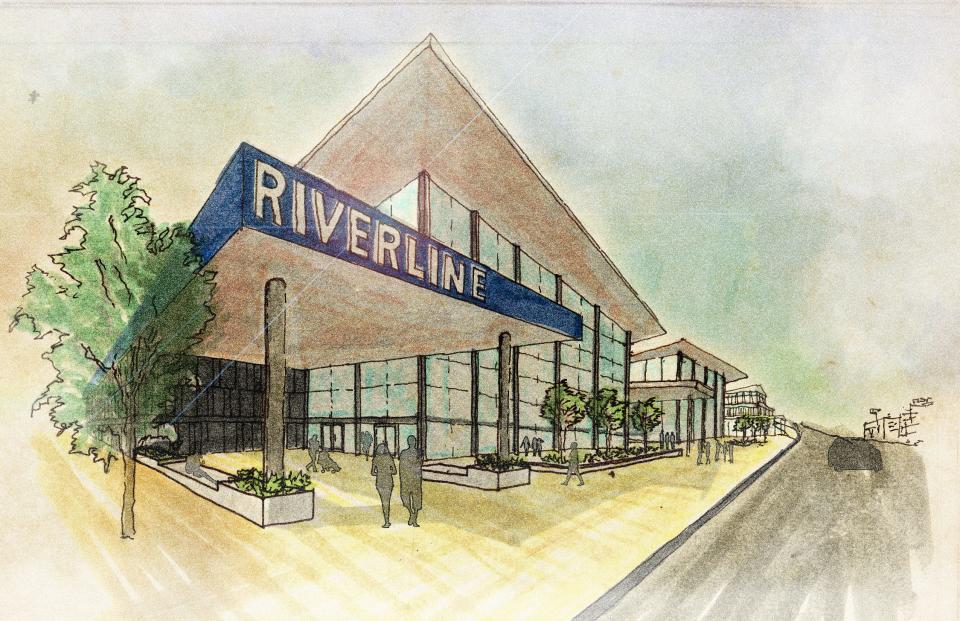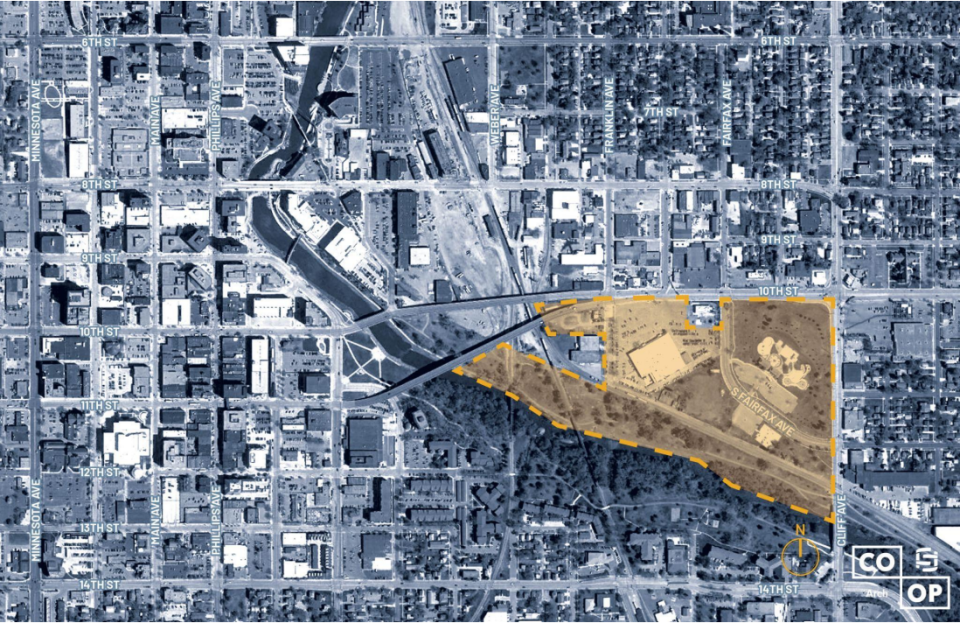Analysis: Riverline Center's success will depend on a successful handoff
- Oops!Something went wrong.Please try again later.
It’s been more than a week since Mayor Paul TenHaken announced his “2050 Vision," a two-step plan to put a brand new convention center in downtown Sioux Falls and turn the city’s aging convention center into indoor recreation space.
But let’s get one thing perfectly clear: Everything about this project is in the earliest possible stages. It’s all speculation at this point.
TenHaken and other high-level members with the project have been open about that fact, to their credit. The phrase that keeps going around is that “the cake is not baked,” which somewhat understates where the city is in this process.

Of course, the cake is not baked. We haven’t made the batter. We don’t have the ingredients. Where we are, roughly, is that we’ve looked up a recipe online and thought about heading to the grocery store sometime next week.
Here’s a short list of the things we don’t yet know about this project:
Who is going to buy the land? How much is the project going to cost? How large should the new convention center be? How long will building it take? Will we have any hotels attached to the convention center? How many rooms will those hotels have? Will there be some sort of a public vote regarding the project?
More: New Riverline District development will expand downtown Sioux Falls to the east
None of that is a criticism. A significant project like this has to start somewhere.
But it underlines how much of an undertaking this work is going to be, and how many people will need to share part of that “2050 Vision.”
TenHaken, for example, has a little more than two years left in his second term as mayor. Rough estimates of when the new convention center could be complete have ranged from four to six years. He’ll likely be there when they cut the ribbon, but the next administration is going to take charge of the project.
In the same vein, we’re less than two months away from seeing half of the seats on the Sioux Falls City Council filled with new faces.
It will be imperative that the current administration lay a strong foundation for this plan that can be built upon by future leadership.
City open to changing plans
A good first sign of that has been the city’s openness to public feedback about what should be built at the Riverline Center.
It was clear from the start that sports was a possibility. It was present in many of the surveys and talked about at the project’s announcement last year. And the Sioux Falls Stadium, currently the home of the Sioux Falls Canaries, is on its last legs.
But the idea was sharply rebuked by the public, with hundreds of people liking comments on the survey that called for keeping a sports stadium out of the area.
More: Sioux Falls divided on the idea of sports in downtown Riverline District: Analysis
“If people don’t think we’re listening, we’re listening,” said TenHaken when asked about whether the feedback had an effect.
TenHaken was clear that he thought putting a stadium downtown would have been a great idea — and he still thinks it would have worked — but emphasized that the public had to be on board with a project of this size and scale.
There will, of course, still be questions to answer on this front. What will the effects of the center have on, say, nearby houses? On parking in downtown?

And where will the money come from? TenHaken has said he would “spitball” the cost for the project at $200-$250 million — a sizable sum.
During a presentation Feb. 13, Councilor Greg Neitzert asked directly about funding. Director of Finance Shawn Pritchett said while it’s too early to know a final price, they should look at how other cities have financed similar projects.
Reaction from other councilors was subdued, with some questions about viability. Councilor Rich Merkouris asked about bringing in a consultant to watch the east bank’s development, and expressed an interest in keeping nearby social services active.
And Councilor Curt Soehl asked what other sites had been compared to this one, while saying he’d like to see what the project would look like closer to Wall Lake.
Councilor David Barranco said the city needed both more event space downtown and indoor recreation space, saying the current convention center “does not maximize the community benefit available” and expressing interest in the possibility of two new hotels in Sioux Falls and the developments those could bring.
'We're losing convention business'
Someone who’s clearly very excited about the project is Experience Sioux Falls CEO Teri Schmidt.
“We’re losing convention business every single day,” Schmidt said in a press conference last week.
Sioux Falls is an easy city to sell, she said, but the problem is space.
She said the other day they had to turn down a group of 800 people for a convention because the group was looking for walkable restaurants and attractions within 5-10 minutes of the center, and 450 attached hotel rooms.
“It’s an economic vitality issue,” Schmidt said.
She expressed confidence in the consultants that the city plans to work with, with hope they would think far enough out to keep the convention center viable for a long time.
More: Sioux Falls is ready to take another shot at hosting March Madness. Will they make it?
But there’s still a few years to go before that happens, she said. She expressed worries the city could lose events like the National Pheasant Fest and Quail Classic — an event that had more than 33,000 attendees in Minneapolis last year, and will be hosted this year in Sioux Falls. So she wants to see that extra space, and those potential hotel rooms, as soon as possible.
“To say I’m excited about this possibility is an understatement.”
Future administrations should look to run with this space. A lack of hotel rooms has long been cited as one of the primary reasons Sioux Falls have fallen short of hosting a first or second round of March Madness.
City significantly below recommendations on indoor rec space
And of course, there’s the second step of this plan: the transforming of the current convention center into indoor recreation space.
Charts and graphs shown at various Riverline presentations have underlined how severely the city needs more of this space. It currently has about 20,000 square feet, well below the national recommendation of 1.5 square feet per resident.
To hit that number in 2025, with an estimated population of 213,694, we’d need to go all the way up to 320,541 square feet.
This portion of the plan is farther off, as the existing convention center needs to keep operating until the new one has been constructed.
And while more indoor recreation space in the city will be a positive, especially in the city’s often-frigid winters, it’s not the only change that will need to be made.
More: City intends to switch transit provider to 'reimagine' Sioux Area Metro
Hopefully, by the time that center is complete, we’ll have seen the improvements to Sioux Area Metro discussed as the city's new transit provider comes online. If it does become one of the city’s primary indoor play areas, it should be accessible to everyone.
Again, we're early in this process. More will become clear as this administration's consulting partner makes their first report in May.
But it's going to be up to another group of leaders — many of whom we don't even know yet — to make this project come together, and to keep the public front and center.
This article originally appeared on Sioux Falls Argus Leader: The Riverline Center will take years to finish. How do we get there?

